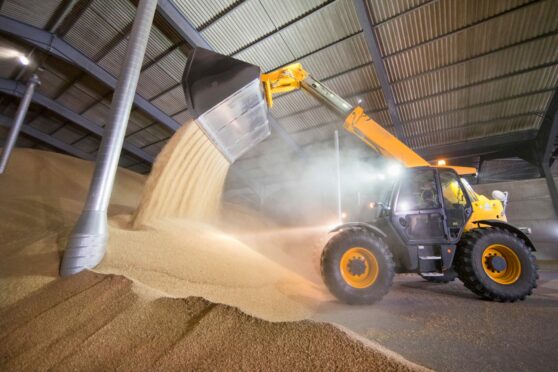Cereal prices are moving up and down by anything between £3 and £6 a tonne at present on a daily basis, while oilseed rape prices are shifting by £5 to £10 a tonne each day, all of which is leaving growers in Scotland to cope with the most volatile market many have ever seen.
“The best advice for growers currently is that if the price works for you today then think very seriously about taking it,” said GrainCo Scotland’s Charlie Birnie, adding that viewing the last two years together, and averaging inputs and incomes over the past 24 months, might help to make sense of the present trading picture.
With the UK producing just 1% of the world’s cereals, the state of the global market is totally beyond any local control, especially with prices on the international market currently being dominated by what’s happening in the Black Sea.
While there are reports of good yield results in both Ukraine and Russia, suggesting larger crops are on their way, there is also renewed uncertainty concerning access to the region’s grains and oilseeds, according to AHDB.
“Alongside the prospect of bigger crops from Ukraine and Russia, we also have larger maize crops in the US which is putting more pressure on the global grain market, causing prices to spike and deviate at pretty short notice,” said James Webster, senior analyst with The Andersons Centre.
Growers are also coping with the legacy of having planted the crops they’re currently harvesting at super-high input costs, only to find that things are very different now.
“We were looking at £700-£800 tonne for nitrogen when the current crops were planted with wheat prices, at the time, running at £250-£300 a tonne,” said Mr Webster. “Values have fallen away dramatically since then, however, with wheat now selling at £180/190 a tonne.”
The fact that ammonium nitrogen is now back to around £360 tonne, with phosphate and potash at £400 to £450 a tonne, half last year’s peak, makes the two-year average bearable, but only if individual farm circumstances allow.
“Every farm is different, especially in terms of available on-farm storage facilities and cash flow requirements,” said Mr Birnie. “In Scotland, much more grain is stored on farms these days than was the case 10 years ago. Farmers have invested significantly in storage to enable grain to be sold direct to customers, rather than moved to an off-farm storage point and then traded on.”
The net result this year, however, is that some growers are still sitting with 2022 harvest grain to sell while wondering what to do with their 2023 crop.
“When the Russia/Ukraine war started the market rose dramatically,” added Mr Birnie.
“Farmers had forward positions of £210 a tonne at that point and the market peaked at £350 a tonne within three months. While that’s probably not going to happen again, some farmers are not wanting to sell on a falling market while a percentage of buyers haven’t used what they’ve already bought, due to consumption dropping in line with declining pig and poultry numbers.
“As a result, oilseed rape prices are currently £160 tonne down on last year. That’s the level of volatility growers are coping with this year.”
